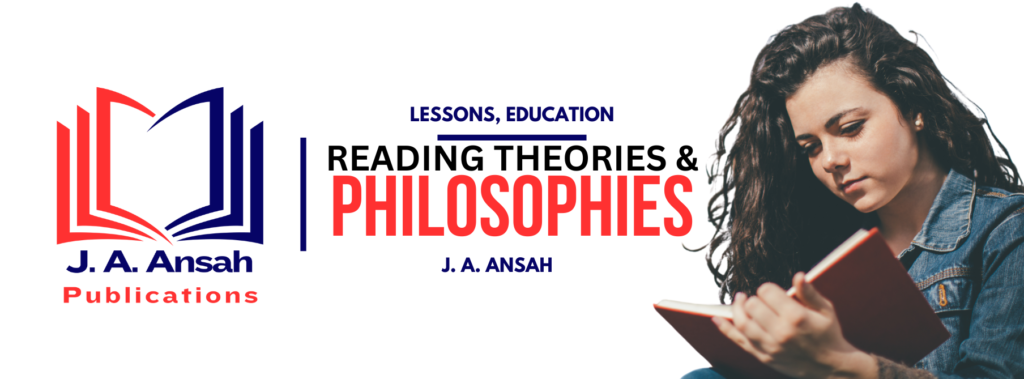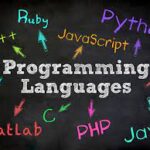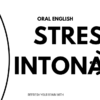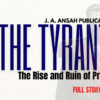WHAT IS READING?
Reading comprehension is the process of simultaneously extracting and constructing meaning through interaction and involvement with written language (Snow, 2002). It is an active, constructive, meaning-making process (Kintsch, 2018; Singer & Alexander, 2017) in which the reader, the text, the activity and the sociocultural context all play central roles. These four aspects are all inter-related and changes in any one of them affect the meaning the reader constructs (Snow, 2002). Reading and learning to read always takes place in a particular context situated within a broader sociocultural context.
Reading is, therefore, the process of decoding symbols or text/combination of letters to construct meaning (reading comprehension) by means of sight or touch. Reading can be intensive or extensive. It involves matching the symbols/letters with their respective sounds.
RC=D x LC
RC: Reading Comprehension
D: Decoding
LC: Language Comprehension
Brainstorm: What is reading, based your understanding?
TYPES OF READING
In general, there are four types of reading, and thus four purposes of reading (Clarke and Siberstein, 1979; O’Reilly & McNamara, 2022), although the writers have slightly diverse terminologies. They are (1) skimming (in order to obtain the general idea of the author), (2) scanning (in order to obtain specific fact or piece of information), (3) intensive or thorough reading (in order to obtain a comprehensive understanding of a reading text, in this case, reading for detail), and (4) critical reading (in order to evaluate information to determine where it fits into one’s own system of beliefs). These types of reading can also be called reading strategies for obtaining necessary information and for determining the proper approaches for a reading task.
THEORIES AND PHILOSOPHIES OF READING
Brainstorm: What are theories and philosophies?
INTRODUCTION
Reading, a fundamental skill in every child’s cognitive development, invites a diverse array of theoretical models that aim to explain its multifaceted nature. Scholars agree that understanding the reading process is a complex task, as it seamlessly interweaves cognitive, linguistic and sociocultural dimensions. The process of reading, as a result, goes beyond the mere decoding of symbols; it is a dynamic interaction between the text and the reader’s previous knowledge, beliefs and attitudes.
Theories and philosophies of reading have evolved over time, concentrating chiefly on how individuals comprehend texts and the cognitive processes involved. Most of the theories and philosophies are interrelated (Fish, 2021; Kucer, 2014), and most either fall under the positivist, interpretivist and pragmatic orientations.
Here are some current key theories and the arguments for and against them:
1. PHONICS APPROACH
A cornerstone of this development is the Phonics Approach, a method that highlights the correlation between sounds and the symbols that represent them. A keystone of this approach is the development of phonological awareness, a precursor to successful reading.
The Phonics Approach can be likened to providing a child with a toolbox full of cognitive tools. Each tool, representing a sound-symbol relationship, is crucial for decoding words and sentences, especially in the case of unspaced texts. As children master these relationships, they simultaneously build their relevant background knowledge, which further fuels the comprehension process.
Argument For
In a comprehensive meta-analysis conducted by the National Institute for Direct Instruction, it was found that students taught using the Phonics Approach showed a 41% improvement in decoding skills compared to those who weren’t explicitly taught phonics. This statistic underscores the effectiveness of the Phonics Approach in promoting phonological awareness and, ultimately, reading comprehension.
Argument Against
However, the Phonics Approach is not a magic wand that transforms a non-reader into a reader. To achieve a comprehensive understanding of a text, children must also develop cognitive comprehension strategies. These strategies act as a bridge between the decoded text and the reader’s background knowledge, facilitating the generation of meaning.
2. SCHEMA THEORY
Closely related to top-down processing, Schema Theory, introduced by Bartlett (1932) and later developed by Rumelhart (1980), posits that readers comprehend texts by using existing knowledge structures, or “schemas,” which help interpret new information.
It describes in detail how the background knowledge of the learner interacts with the reading task and illustrates how a student’s knowledge and previous experience with the world is crucial to deciphering a text. The ability to use this schema (schemata), or background knowledge, plays a fundamental role in one’s trial to comprehend a text. Schema theory is based on the notion that past experiences lead to the creation of mental frameworks that help a reader make sense of new experiences.
Content and formal schemata
Schema theorists differentiate formal schemata (knowledge about the structure of a text) from content schemata (knowledge about the subject matter of a text), and a reader’s prior knowledge of both schemata enables him to predict events and meaning as well as to infer meaning from a wider context. Formal schemata refer to the way that texts differ from one another; for example, a reading text could be a fictional work, a letter to the editor, or a scientific essay, and each genre will have a different structural organisation.
Content schemata refer to the message of the text. One’s familiarity with the content will make more productive and efficient. A reader comprehends a message when he/she is able to bring to mind a schema that gives account of the objects and events described in the message.
Arguments For
Schema theory highlights the importance of background knowledge in understanding text. It explains why prior knowledge enhances comprehension, making this theory valuable in educational settings. Schema theory highlights the crucial role of pre-existing knowledge in understanding new texts.
When readers can connect what they are reading to schemas—structured frameworks of knowledge—it becomes easier to integrate new information. For example, a reader who has a schema about how theatres operate will find it easier to understand a story set in a theatre.
This theory emphasises that comprehension isn’t just a passive process but involves active engagement of memory and experience, making it highly effective in educational environments where building background knowledge is essential for deeper understanding.
It explains reading difficulties: Schema theory can explain why some readers struggle with comprehension. If a reader has limited background knowledge or lacks appropriate schemas related to the text, comprehension can be hindered. This gives educators insight into why some students may have difficulty and can guide instruction to build those necessary schemas for improved learning.
Arguments Against
Oversimplifies reading comprehension: Critics argue that schema theory focuses too much on prior knowledge at the expense of other important factors, such as the role of the text itself. For instance, a student may not have the appropriate background knowledge yet still be able to understand a text through careful attention to context, vocabulary and textual cues.
Lack of focus on inferencing and textual analysis: Schema theory underplays the role of inferencing—where readers make predictions or fill gaps while reading—and places less emphasis on critical textual analysis.
McVee et al. (2005) suggest that over-reliance on schema theory could prevent readers from developing these essential skills for navigating unfamiliar content.
3. COGNITIVE CONSTRUCTIVIST THEORY
This theory, associated with Jean Piaget’s work and expanded by Kintsch (1998), emphasises that reading comprehension involves active construction of meaning through interaction with the text. Readers integrate new information with their existing cognitive structures. This takes a step further, placing the reader at the centre of the science of reading. Rooted in social constructivism and the concept of Zone of Proximal Development (the space between what a learner can do without assistance and what a learner can do with guidance), the Constructivist Theory posits that individuals create their own understanding and knowledge of the world through experiencing things and reflecting on those experiences.
In the realm of reading, this theory underscores the reader’s active role in creating meaning from texts. It suggests that reading is not just about acquiring or receiving instruction of knowledge; it is about constructing knowledge. The reader uses their background knowledge and cognitive development to comprehend, interpret and make sense of the text. This process is not limited to reading; it also extends to writing composition, as the reader uses their knowledge about sounds, words and syntax to express their thoughts and ideas.
Arguments For
Cognitive constructivism emphasises that comprehension is an active process, where readers construct mental representations based on text. It accounts for individual differences in comprehension and recognises reading as an active, problem-solving task.
It acknowledges active participation in comprehension: Cognitive constructivist theory views reading as an active process of meaning construction, where the reader interacts with the text to build mental models or situational representations. This approach explains how individuals make sense of text by integrating new information with what they already know, emphasising the mental engagement required for understanding complex material.
It accounts for individual differences: This theory allows for the recognition of diverse reading abilities and experiences. Since comprehension depends on the reader’s cognitive structures and prior knowledge, it helps explain why different people interpret the same text in different ways or why some readers grasp meaning more easily than others.
The constructivist approach to reading and writing instruction can enhance students’ literacy skills and foster their cognitive development.
The Constructivist Reading Theory underlines the importance of viewing reading as an active, constructive process.
It encourages educators to create learning environments that support students’ active engagement with texts, thereby empowering them to become autonomous learners who can construct their own understanding and knowledge.
Arguments Against
Critics argue that it is difficult to measure the “mental models” or “situational representations” built during reading, making the theory hard to validate empirically.
Difficult to measure mental processes: One of the main criticisms of cognitive constructivist theory is that it is difficult to empirically validate. The theory relies on the concept of internal mental models or “situational representations” that are formed while reading, but these constructs are abstract and hard to measure. Without clear, observable evidence of these cognitive processes, critics argue that it is difficult to fully support the theory scientifically (Graesser et al., 1997).
It underestimates the role of textual features: While focusing on the reader’s mental processing, cognitive constructivism might underestimate the role played by specific textual elements, such as structure, vocabulary and syntax, in comprehension. For instance, some aspects of reading comprehension could be explained more effectively through the study of linguistic features rather than just cognitive structures.
4. BOTTOM-UP AND TOP-DOWN PROCESSING
Bottom-up theories, like the Simple View of Reading (Gough & Tunmer, 1986), argue that reading comprehension is the result of decoding written text, while top-down theories focus on the reader’s prior knowledge and cognitive resources.
The traditional bottom-up approach to reading was influenced by behaviourist psychology of the 1950s, which claimed learning was based upon “habit formation, brought about by the repeated association of a stimulus with a response” and language learning was characterised as a “response system that humans acquire through automatic conditioning processes,” where “some patterns of language are reinforced (rewarded) and others are not,” and “only those patterns reinforced by the community of language users will persist”. Behaviourism became the basis of the audio-lingual method, which sought to form second language “habits” through drilling, repetition and error correction.
The cognitive view (top-down processing): In the 1960s a paradigm shift occurred in the cognitive sciences. Behaviourism became somewhat discredited as the new cognitive theory represented the mind’s innate capacity for learning, which gave new explanatory power to how humans acquired their first language; this also had a tremendous impact on the field of English as a Second Language (ESL)/English as a Foreign Language (EFL) as psycholinguists explained “how such internal representations of the foreign language develop within the learner’s mind”.
In this view, reading is not just extracting meaning from a text but a process of connecting information in the text with the knowledge the reader brings to the act of reading. In this sense, reading is a dialogue between the reader and the text which involves an active cognitive process in which the reader’s background knowledge plays a key role in the creation of meaning.
Arguments For
Both approaches have practical value in explaining different aspects of reading. Bottom-up models are useful for explaining the early stages of reading, where decoding is critical. Top-down models emphasise the importance of context and background knowledge.
Comprehensive view of reading skills: Bottom-up processing emphasises the importance of decoding skills, such as phonics and word recognition, which are crucial in the early stages of learning to read. Without these foundational skills, it would be difficult for a reader to comprehend the text.
Top-down processing, on the other hand, focuses on the reader’s prior knowledge and expectations, recognising that comprehension involves more than just decoding—it also requires understanding context, making predictions and drawing inferences.
Useful for diagnosing reading difficulties: These theories are helpful in understanding and diagnosing reading problems. For example, if a reader can decode words (bottom-up) but still struggles with comprehension, it may point to issues with background knowledge or inferencing skills (top-down).
Arguments Against
A pure bottom-up approach ignores the reader’s use of context and background knowledge, while a purely top-down approach assumes that text itself is less important than the reader’s cognitive resources (Stanovich, 1980).
Too rigid when viewed separately: A purely bottom-up model is seen as too narrow because it focuses only on decoding and neglects how readers use context and prior knowledge to make sense of text. Likewise, a purely top-down model assumes that understanding can happen without sufficient attention to the text itself, which may overlook the importance of accurate word recognition in understanding meaning.
Limits of application: In real-world reading, most comprehension involves a blend of both bottom-up and top-down processes. Neither theory alone can fully account for all aspects of reading comprehension, making these approaches less practical when considered in isolation (Stanovich, 1980).
5. INTERACTIVE COMPENSATORY MODEL
Stanovich (1980) proposed that reading comprehension is a dynamic interaction of both bottom-up and top-down processes. When one type of processing (e.g., decoding) is weak, the other compensates to facilitate comprehension. Interactive Reading Theory presents another nuanced perspective. This theory integrates the strengths of both the bottom-up theory, which focuses on the decoding of words, and the top-down theory, which emphasises comprehension and meaning-making. In essence, the Interactive Reading Theory sees reading as a synergistic process where the reader uses both bottom-up and top-down processes simultaneously.
This theory suggests that reading involves more than just a bottom-up, language-based process. While the bottom-up approach to reading is vital for decoding words and understanding their literal meaning, top-down processes help readers to link these words to their prior knowledge, experiences and the broader context, enabling them to derive deeper meanings from the text.
Arguments For
The interactive model provides a more holistic understanding of reading, recognising that both decoding and higher-level cognitive processes contribute to comprehension. This is especially relevant in educational settings.
Balanced explanation of reading processes: Stanovich’s interactive compensatory model integrates both bottom-up and top-down processes, acknowledging that when one process (such as decoding) is weak, the other (like contextual guessing) can compensate. This makes the model highly applicable to diverse readers, from beginners to skilled readers, by showing how they may rely on different strategies at different times.
Holistic approach to comprehension: This theory reflects how real reading occurs, combining multiple cognitive processes. It is principally useful for understanding how skilled readers shift between strategies depending on the difficulty of the text and their familiarity with the subject matter.
It supports the view that a balanced, interactive approach to reading instruction can be more effective in fostering reading comprehension.
In essence, the Interactive Reading Theory highlights the dynamic interplay between the reader, the text and the context. It underscores the importance of a holistic approach to reading instruction that empowers learners to engage with texts actively and constructively, thereby enhancing their reading skills and promoting deeper learning.
Arguments Against
Critics argue that this model is too broad and lacks specificity. While it explains the interaction of processes, it offers less insight into how these processes can be measured or applied in practice (Perfetti, 1985).
Lacks specificity in implementation: While the theory explains how various processes interact, critics argue that it is too broad and doesn’t provide concrete strategies for educators or researchers to measure or implement these processes in practice (Perfetti, 1985). Without specific guidelines, it may be difficult to apply the interactive model to targeted interventions.
Challenges in balancing both processes: Although the interactive compensatory model offers a comprehensive explanation of how readers switch between decoding and contextual guessing, it can be difficult for educators to identify when and how to strengthen one process over the other, especially when working with struggling readers.
6. DUAL CODING THEORY/DUAL-ROUTE MODE
Paivio (1986) proposed dual coding theory, which posits that verbal and non-verbal systems work together during reading comprehension. Images and words are processed separately but are interconnected, leading to better understanding and retention of information.
The Dual-Route Model posits that there are two distinct pathways or ‘routes’ involved in reading – the lexical route and the non-lexical route. The lexical route taps into the reader’s stored knowledge of words and their meanings, aligning with the Whole Language Theory’s focus on comprehension and meaning-making. Conversely, the non-lexical route highlights the phonetic decoding of words, resonating with the Phonics Approach’s emphasis on phonological awareness.
Arguments For
This theory is particularly effective in explaining how visuals support reading comprehension, making it relevant in multimedia learning environments.
Enhanced comprehension through dual systems: Dual coding theory’s emphasis on both verbal and non-verbal systems explains why visuals can significantly enhance comprehension, especially in multimedia environments. It is particularly effective in educational contexts where combining text with images, diagrams, or other visual aids can improve understanding and retention of complex concepts.
It supports diverse learning styles: The theory caters to learners who may process information better through visual means. For students who struggle with purely verbal text, the combination of images and words can make abstract or complex concepts easier to grasp.
The Dual-Route Model has the potential in balancing the strengths of both Phonics and Whole Language theories.
Arguments Against
Some critics argue that dual coding theory is limited when applied to more abstract texts where visuals play a minimal role (Clark & Paivio, 1991).
Limited applicability to abstract texts: Some critics argue that dual coding theory is less useful for texts that do not easily lend themselves to visualisation, such as philosophical writings or complex scientific concepts that are difficult to represent visually. In such cases, relying on dual coding might not meaningfully enhance comprehension (Clark & Paivio, 1991).
Over-reliance on visuals: Whereas visuals can aid comprehension, some argue that dual coding theory may place too much emphasis on visual aids at the expense of deep engagement with the text itself, potentially leading to surface-level understanding rather than critical thinking (Afflerbach, 2020).
It is crucial to note that the Dual-Route Model, like other theories, is not a universal theory that can be applied indiscriminately. The effectiveness of this model depends on several factors, including the learner’s age, cognitive abilities and cognitive processes, among others.
7. THE INFLUENCE OF CONTEXT AND CULTURE: SOCIOCULTURAL THEORIES OF READING
Building on the idea of individual construction of knowledge from the Constructivist Theory, Sociocultural Theories of Reading add another layer of complexity by considering the influence of context, culture and social interaction. Pioneered by Lev Vygotsky, the sociocultural theory posits that cognitive development, including reading development, is deeply embedded in social interactions and cultural contexts.
Sociocultural theories emphasise the role of culture and social context in shaping an individual’s knowledge about cognition. They posit that the reading process is not just an isolated cognitive activity but a social practice that is influenced by cultural norms, practices and values. This perspective suggests that our base knowledge and language comprehension skills are not just products of our individual cognitive processes but are also shaped by our social and cultural experiences.
Arguments For
In the context of reading instruction, this theory highlights the importance of creating social learning environments or social learning spaces that reflect and respect the cultural and linguistic diversity of students.
It also underscores the importance of acknowledging and building on students’ prior knowledge and experiences, which can serve as a powerful tool for enhancing their reading comprehension.
Culturally responsive pedagogy of reading can promote students’ engagement and improve their reading comprehension.
In essence, Sociocultural Theories of Reading challenge us to view reading not just as a cognitive process but as a social practice that is deeply influenced by cultural and social contexts.
They urge us to consider the sociocultural dimensions of reading and their implications for reading instruction.
What are the arguments against this theory?
8. TRANSACTIONAL THEORY
Developed by Louise Rosenblatt (1978), transactional theory suggests that reading is an interactive process between the reader and the text. Each reader brings a unique set of experiences and emotions that shape the interpretation of the text. Rosenblatt’s theory builds upon the philosophical foundations laid by John Dewey and posits that meaning is constructed in a continuous transaction between the reader and the text.
This theory underscores that reading is not a passive activity but an active engagement where the reader plays a vital role in selecting and synthesising information from the text. This process involves abstracting and analysing information, connecting it to prior knowledge and drawing inferences to derive meaning.
Arguments For
This theory supports a more personalised view of reading, where meaning is not inherent in the text but emerges through the reader’s engagement with it. This makes it appealing in settings that value critical thinking and individual interpretation.
Personalised and meaningful reading experience: One of the strengths of transactional theory is its focus on the reader’s active role in creating meaning. Each reader interprets the text differently based on their life experiences, emotions and personal engagement with the text. This individualised approach is especially useful in literature and humanities classes, where diverse perspectives can lead to rich discussions and deeper connections to the material.
It promotes critical thinking and creativity: By emphasising the transaction between the reader and the text, this theory encourages readers to actively construct meaning, rather than passively absorbing information. This promotes critical thinking, allowing readers to reflect on how their personal experiences and knowledge influence their understanding of the text.
Rosenblatt’s Transactional Reading Theory is a testament to the richness and depth of the reading process. It suggests that every reading experience is unique, influenced by the reader’s background, the text’s content and the context in which reading occurs.
It emphasises that understanding a text involves more than just decoding words or following a linear progression of ideas. Instead, it involves a dynamic interplay between the reader and the text, continuously shaping and reshaping meanings in light of new insights and understandings.
Arguments Against
The transactional model has been criticised for placing too much emphasis on the reader’s role, which can lead to subjective interpretations and a lack of focus on textual analysis.
Risk of excessive subjectivity: The emphasis on the reader’s unique perspective can lead to overly subjective interpretations, which may stray too far from the author’s intended meaning or the text’s objective content. This can be particularly problematic in contexts where precise understanding of the text is required, such as in legal or technical documents.
Underplays the importance of textual evidence: Critics argue that the transactional model downplays the importance of textual analysis. While personal engagement is important, the meaning of a text can often be grounded in its structure, language and context, not just the reader’s personal experience. Focusing too much on the reader can detract from close reading of the text itself (Beach, 1993).
WHOLE LANGUAGE THEORY: VIEWING READING AS A COMPREHENSIVE SYSTEM
Building on the notion of cognitive comprehension strategies, the Whole Language Theory presents a different perspective on literacy development. This theory perceives reading as an integrative process that connects the reader, the text, and the context. Unlike the traditional theory of Phonics, which focuses primarily on decoding, the Whole Language Theory accentuates the importance of comprehension and meaning-making in reading.
The Whole Language Theory posits that the development of a fluent reader is not merely about mastering phonetic cues or decoding skills. Instead, it underlines the importance of the reader’s interaction with the text and the subsequent process of constructing meaning. This theory promotes the idea of a strategic reader – one who actively engages with the text, drawing on their existing knowledge to comprehend and interpret the information presented.
Learners exposed to the Whole Language Theory showed a significant improvement in their reading comprehension scores. This finding highlights the effectiveness of a balanced reading instruction approach that combines the strengths of both Phonics and Whole Language theories.
In essence, the Whole Language Theory encourages a more holistic approach to reading, one that acknowledges the role of the reader, the text and the context. This approach empowers students to become not just fluent readers, but also critical thinkers who can derive deeper meanings from texts (Oakhill & Cain, 2012).
These points offer views on the strengths and limitations of each theory, providing a deeper understanding of the intricacies involved in reading comprehension research and education.
CRITICAL READING THEORY: PUTTING IT INTO PRACTICE
The theoretical constructs we have explored so far provide an invaluable foundation for understanding the complexity of the reading process. Yet, the real challenge lies in translating these theories into practical teaching strategies that can enhance reading instruction and foster learners’ literacy development (Zawilinski, 2018). Below are seven strategies that teachers can use to put these reading theories into practice:
1. Combine a variety of texts: Use a diverse range of texts, including culturally relevant materials, to stimulate students’ interest and engagement. This approach aligns with the Sociocultural Theory of Reading, which emphasises the role of cultural and social contexts in shaping students’ reading experiences.
2. Promote active engagement: Encourage learners to interact actively with texts by asking questions, making predictions and drawing connections between the text and their prior knowledge. This strategy resonates with the Transactional Reading Theory and the Constructivist Reading Theory, which view reading as an active, meaning-making process.
3. Teach decoding and comprehension strategies: Provide explicit instruction in phonics (the Phonics Approach) and comprehension strategies (the Whole Language Theory) to help learners develop a balanced set of reading skills.
4. Utilise scaffolding techniques: Implement Vygotsky’s concept of the Zone of Proximal Development by providing scaffolding support that helps students gradually improve their reading skills.
5. Foster metacognitive awareness: Teach students about the different stages of the reading process, from the pre-reading stage to the comprehension process. This strategy aligns with the Interactive Reading Theory, which emphasises the importance of metacognitive awareness in reading comprehension.
6. Create a collaborative learning environment: Foster a social learning environment where students can learn from each other through discussions and collaborative activities. This approach is grounded in the sociocultural theory, which highlights the importance of social interaction in cognitive development.
7. Encourage reflective practice: After reading, encourage students to reflect on their reading experience, analyse their comprehension process and identify areas for improvement. This strategy draws on the principles of the Constructivist Reading Theory and the Transactional Reading Theory, which view reading as a reflective and interactive process.
By implementing these strategies, teachers can create a learning environment that not only enhances students’ reading skills but also fosters their cognitive development and promotes a lifelong love for reading.
References
Afflerbach, P. (2020). Understanding and using reading assessment, K-12. 3rd ed. Routledge.
Bartlett, F. C. (1932). Remembering: A study in experimental and social psychology. Cambridge University Press.
Beach, R. (1993). A teacher’s introduction to reader-response theories. National Council of Teachers of English.
Clark, J. M., & Paivio, A. (1991). Dual coding theory and education. Educational Psychology Review, 3(3), 149-210.
Clarke, M.A. & Silberstein, S. (1979). Toward a realization of psycholinguistics principles in the esl reading class. In Ronald Mackay, et al. (eds.). Reading in a second language. Newbury House Publisher, Inc.
Fish, W. (2021). Philosophy of perception: A contemporary introduction. Routledge.
Gough, P. B., & Tunmer, W. E. (1986). Decoding, reading, and reading disability. Remedial and Special Education, 7(1), 6–10.
Graesser, A. C., Millis, K. K., & Zwaan, R. A. (1997). Discourse comprehension. Annual Review of Psychology, 48(1), 163-189.
Kintsch, W. (1998). Comprehension: A paradigm for cognition. Cambridge University Press.
Kintsch, W. (2018). Revisiting the construction—Integration model of text comprehension and its implications for instruction theoretical models and processes of literacy: Routledge.
Kucer, S. B. (2014). Dimensions of literacy: A conceptual base for teaching reading and writing in school settings. 2nd ed. Routledge.
McNeil, L. (2000). Creating new inequalities: Contradictions of reform. Phi Delta Kappan, 8(10), 728-736.
McVee, M. B., Dunsmore, K., & Gavelek, J. R. (2005). Schema theory revisited. Review of Educational Research, 75(4), 531-566.
O’Reilly, T. & McNamara, D. S. (2022). The role of reading comprehension in literacy: Past, present, and future. Educational Psychologist, 57(3), 134-146.
Paivio, A. (1986). Mental representations: A dual coding approach. Oxford University Press.
Paris, S. G., & Hamilton, E. (2016). The importance of motivation in reading comprehension. Educational Psychologist, 51(4), 311-322.
Perfetti, C. A. (1985). Reading ability. Oxford University Press.
Rosenblatt, L. M. (1978). The reader, the text, the poem: The transactional theory of the literary work. Southern Illinois University Press.
Rumelhart, D. E. (1980). Schemata: The building blocks of cognition. In R. Spiro, B. Bruce, & W. Brewer (Eds.), Theoretical issues in reading comprehension (pp. 33-58). Lawrence Erlbaum Associates.
Singer, L. M., & Alexander, P. A. (2017). Reading on paper and digitally: What the past decades of empirical research reveal. Review of Educational Research, 87(6), 1007-1041.
Snow, C. (2002). Reading for understanding: Toward an R&D program in reading comprehension: Rand Corporation.
Stanovich, K. E. (1980). Toward an interactive-compensatory model of individual differences in the development of reading fluency. Reading Research Quarterly, 16(1), 32-71.
Turbill, J. (2001). A researcher goes to school: The integration of technology into the early literacy curriculum. Journal of Early Literacy, 1(3), 255-279.
Unsworth, L. (2001). Teaching multiliteracies across the curriculum: Changing contexts of text and image in classroom practice. Open University Press.
Vaughn, S., Boardman, A., & Klingner, J. K. (2024). Teaching reading comprehension to students with learning difficulties. Guilford Publications.
Zawilinski, L. M. (2018). The role of technology in supporting reading comprehension: A review of the literature. International Journal of Literacy, Culture, and Language Education, 7(1), 1-11.









Одеяние не только защищает от замерзания и зноя, но и подчеркивает стиль. Многие выбирают наряды, чтобы чувствовать себя уверенно. Для кого-то, какое впечатление они производят, поэтому одежда является частью имиджа. Также, правильно подобранный наряд помогает в нужной обстановке. Так, строгий стиль создает профессиональный вид, а удобные вещи лучше подходят для повседневной жизни. Таким образом, стиль играет роль в разных аспектах жизни.
https://gettogether.community/events/60325/discover-luxury-fashion-online/
The VectorJet team specializes in organizing personal aviation services, group travel solutions, and freight charters.
They deliver tailored solutions for private jet travel, quick air transfers, rotorcraft services, and logistics operations, including priority and relief missions.
The company provides adaptive travel options with individually tailored fleet suggestions, constant assistance, and help with unique requests, such as animal-friendly travel or off-grid destination access.
Additional services include plane rental, transactions, and private jet management.
VectorJet operates as an agent between travelers and partner airlines, ensuring premium quality, seamlessness, and efficiency.
Their objective is to deliver private flight solutions effortless, safe, and perfectly tailored for every client.
vector-jet.com
Доставка грузов в городе Минск — надежное решение для организаций и частных лиц.
Мы оказываем перевозки по Минску и региона, работая круглосуточно.
В нашем транспортном парке технически исправные транспортные средства разной грузоподъемности, что позволяет учитывать любые задачи клиентов.
gruzoperevozki-minsk12.ru
Мы обеспечиваем квартирные переезды, транспортировку мебели, строительных материалов, а также малогабаритных товаров.
Наши специалисты — это опытные работники, знающие дорогах Минска.
Мы предлагаем быструю подачу транспорта, бережную погрузку и разгрузку в нужное место.
Подать заявку на грузоперевозку можно онлайн или по звонку с консультацией.